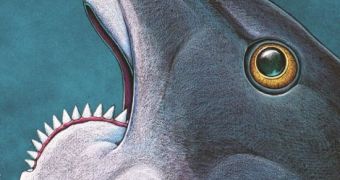The Helicoprion is an ancestor of the modern sharks now inhabiting our oceans. However, few can doubt the fact that, as scary as a great white shark's teeth might be, the Helicoprion's smile used to be significantly more frightful.
With the help of art scanners, a team of specialists have recently managed to make head and tail of the Helicoprion's anatomy, meaning that they have been able to figure out how and where the animal's teeth fit in its mouth.
Thus, they have reached the conclusion that this prehistoric animal had a spiral of teeth which rolled out of its lower jaw and which worked fairly similar to a conveyor belt.
More precisely, it is the researchers' belief that the animal was fully capable of making its conveyor belt of teeth move back and forth in order to cut right through its prey.
Prior to these researchers' piecing together these three-dimensional reconstructions of the prehistoric shark's oral cavity, nobody was able to say what the Helicoprion looked like.
This was because its anatomy was so peculiar, that figuring out how its teeth attached to its mouth seemed to be a question bound to remain unanswered, Daily Mail says.
“New CT (computerised tomography) scans of a unique specimen from Idaho show the spiral of teeth within the jaws of the animal, giving new information on what the animal looked like, and how it ate,” explained Professor Leif Tapanila, now working with the Idaho State University.
“We were able to answer where the set of teeth fit in the animal. They fit in the back of the mouth, right next to the back joint of the jaw. We were able to refute it might have been located at the front of the jaw,” Professor Leif Tapanila further argued.
According to the same source, the Helicoprion used to weigh about 71 stone (roughly half a ton), and measured about 25 feet (about 7.6 meters) in length.

 14 DAY TRIAL //
14 DAY TRIAL //